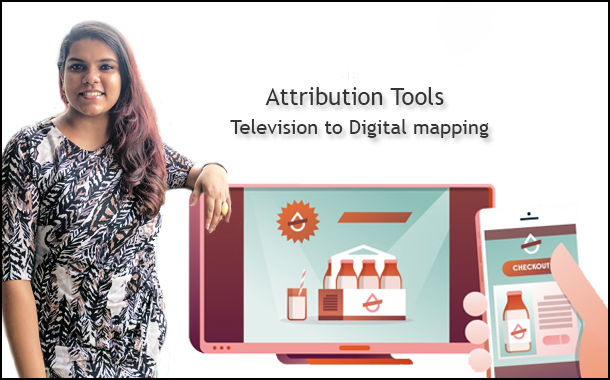Authored By Merlin Coutinho
- Measuring the immediate Impact of TV through digital becomes inevitable in the world of Omni Channel Marketing Strategies.
- Attribution Models gage the impact your TV spends have made on potential consumers and helps brands in taking better decision in budgeting and TV planning.
- The insights gathered assists towards achieving healthier ROI’s while driving cost efficiencies without having to mount TV media spends.
The hype about TV losing its mojo has been around for a few years now, but with each research report being released this statement seems to lose its credibility. A recent report by e-marketer states that broadcast TV still tops the chart, with more than 8 in 10 Internet users watching TV at least once a month. This on an average is more time spent with TV than with any of the other media devices accessed to consume content.
TV consumption is still rampant but a fairly new trend has been catching on and i.e. simultaneous media consumption. Research reveals that 87% of TV viewers utilize at least one additional source (i.e. phone, tablet, laptop, etc.) while watching TV – meaning their most immediate response to seeing your TV ad will likely be some form of digital engagement with your brand.
This shift in consumer behavior has had a resultant effect not just in deploying Omni channel marketing strategies but also defined the way these campaigns are executed & measured. The thriving need and constant race of having to break through the clutter and engage with audiences is in evidently resulting in increased media spends & greater accountability.
Traditional TV measuring metrics heavily rely on GRP’s & TRP’s but with the current media fragmentation & power to “know more” resting in the palm of your hands, these might not be enough to gage the impact your TV spends have made on potential consumers. Therefore, creating a holistic picture of performance now means connecting the dots between TV advertising and digital responses.
Enter TV attribution Model.These models lend to TV the measuring metrics and accountability that digital advertising holds as of today.
What do this attribution models offer and how marketers can explore these platforms to make more optimal decision in media spends and buys
- Gaining clarity on the immediate Impact of TV ads is important
Given the current scenario TV ads do deliver immediate impact and this can be felt by the brand by measuring several digital currencies like search, likes, visit, conversion etc. However this impact can be felt in various capacities depending on the ad spots bought. For Example – An ad spot during high reach event like IPL in India is likely to deliver a greater & immediate impact in comparison to other spots. Certain shows or channels may not deliver a similar impact on the brand and hence spends on these channels can be better optimized by identifying most optimal channel / genre and time-band mix which aids in a brands digital journey.
|
Attribution models that analyze such granular level data are now available and help brands in taking better decision in budgeting and TV planning. With almost all advertisers having some digital footprint across the eco system measuring TV to digital KPI’ then becomes of immense importance and hence gaining clarity on the immediate Impact of TV on digital takes center stage.
- Attribution Models Facilitate Smarter Ad Buys
TV attribution solutions will optimize your traditional media buy though smarter TV campaign planning informed by timely & comprehensive insights. Certain robust attribution models provide this data in real time though accessible and user-friendly dashboards that cuts down the lag of having to wait for months to get actionable insights to your TV campaign.
The Online impact of your ads is broken down by a variety of segments, enabling you to make data driven decisions around your TV strategy E.g. – Time stamp based, day part, creative, channels & the likes. The insights gathered enable you to get healthier ROI’s while driving cost efficiencies without having to mount TV media spends.
- Allows for a Holistic & integrated campaign online & offline
Insight from these attribution models for TV-to-online behavior also enables you to make smarter decisions around your online campaigns, helping you identify when, where and how to best capture this TV driven audience.
E.g. – gagging the impact of the TV ads on certain keywords can then be used to craft digital communication or decide on high recall keywords to bid.
E.g. – Create shared media experiences for the brand when audiences are actually looking for the brand on digital in sync with TV – thus making TV ads clickable.
Marketing attribution takes center stage with Omni channel strategies being deployed. These models are required more than ever to optimize spends and ensure each channel is used effectively both in isolation, as well as part of campaigns as a whole. With TV still accounting for a significant portion of marketing spends; it is vital that marketers gain an accurate view of the role TV plays in their omni-channel strategy. By implementing the right TV attribution model, marketers can bridge the gap between TV ads, digital reactions and tangible results.
Authored By Merlin Coutinho
Group Head – Brand Solutions – Silverpush


















